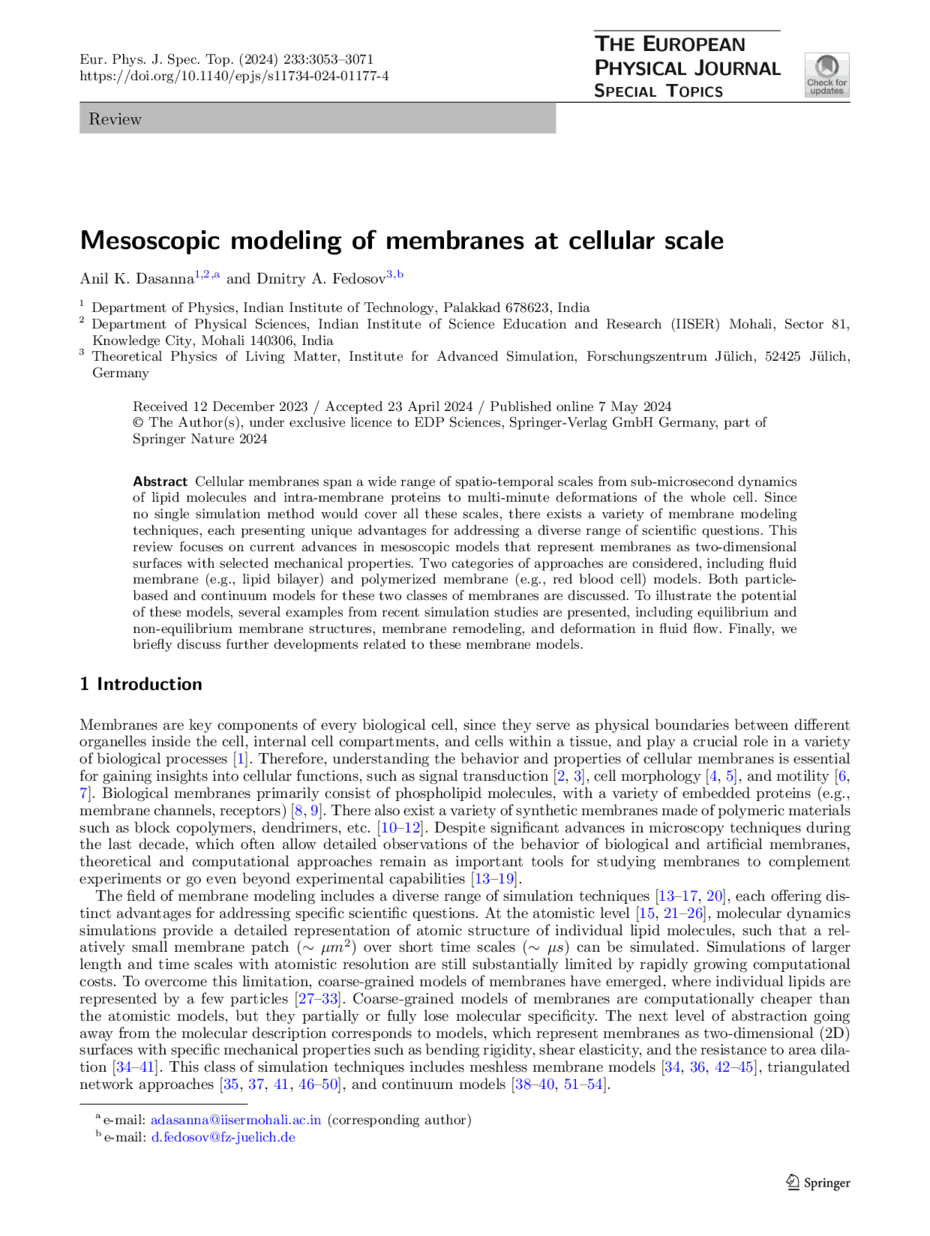https://doi.org/10.1140/epjs/s11734-024-01177-4
Review
Mesoscopic modeling of membranes at cellular scale
1
Department of Physics, Indian Institute of Technology, 678623, Palakkad, India
2
Department of Physical Sciences, Indian Institute of Science Education and Research (IISER) Mohali, Sector 81, 140306, Knowledge City, Mohali, India
3
Theoretical Physics of Living Matter, Institute for Advanced Simulation, Forschungszentrum Jülich, 52425, Jülich, Germany
Received:
12
December
2023
Accepted:
23
April
2024
Published online:
7
May
2024
Cellular membranes span a wide range of spatio-temporal scales from sub-microsecond dynamics of lipid molecules and intra-membrane proteins to multi-minute deformations of the whole cell. Since no single simulation method would cover all these scales, there exists a variety of membrane modeling techniques, each presenting unique advantages for addressing a diverse range of scientific questions. This review focuses on current advances in mesoscopic models that represent membranes as two-dimensional surfaces with selected mechanical properties. Two categories of approaches are considered, including fluid membrane (e.g., lipid bilayer) and polymerized membrane (e.g., red blood cell) models. Both particle-based and continuum models for these two classes of membranes are discussed. To illustrate the potential of these models, several examples from recent simulation studies are presented, including equilibrium and non-equilibrium membrane structures, membrane remodeling, and deformation in fluid flow. Finally, we briefly discuss further developments related to these membrane models.
Copyright comment Springer Nature or its licensor (e.g. a society or other partner) holds exclusive rights to this article under a publishing agreement with the author(s) or other rightsholder(s); author self-archiving of the accepted manuscript version of this article is solely governed by the terms of such publishing agreement and applicable law.
© The Author(s), under exclusive licence to EDP Sciences, Springer-Verlag GmbH Germany, part of Springer Nature 2024
Springer Nature or its licensor (e.g. a society or other partner) holds exclusive rights to this article under a publishing agreement with the author(s) or other rightsholder(s); author self-archiving of the accepted manuscript version of this article is solely governed by the terms of such publishing agreement and applicable law.





